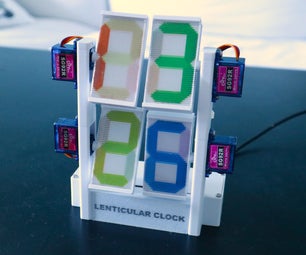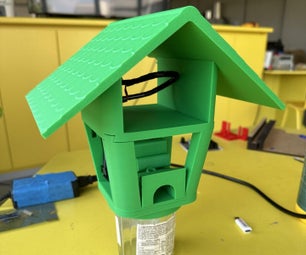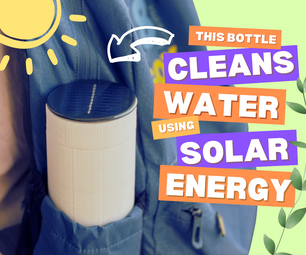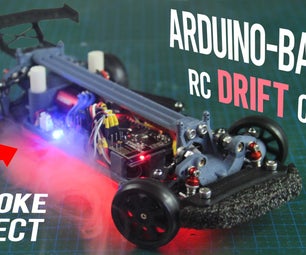Introduction: Build Esp12e Web-server App Using Arduino IDE
Introductions :
ESP12e is actually a microcontroller, ESP8266 is the name of the microcontroller developed by Espressif Systems which is a company based out of shanghai. This microcontroller has the ability to perform WIFI related activities hence it is widely used as a WIFI module.
Descriptions :
In this inconstructibles we will be going on a 1st step in the esp12e , and make a simple web-server for on/off command throw the local wifi network using app inventor and arduino IDE .
Step 1: Components Needed :
The ESP-12 Breakout board breaks out the ESP-12 pins which are in 2mm pitch to 2.54mm pitch (spacing), so that you can use it with a standard breadboard / berg header.
It also has a place where to put a 3.3V regulator on board ("like the lm117 , mine it's in the back other are in the front side but i will not be using that we will see later on ") , so you can easily power it with a digital circuit that can supply 5V.
HARDWARE:
1.ESP-12e
2.ESP-12 breakout board
3.jumpier wire
4.ftdi
5.lm117
6.some kind of battery
7.capacitor (100 nf 10 uf)
8.breadbord
9.soldering iron
10.female and male header header
11.switches ( use for turning the ESP in programming mod and reverse )
12.buttons
13.connector (for power supply connection )
14.a local wifi network
SOFTWARE :
Arduino IDE .
web browser .
Step 2: Schematic :
**You need to connect a few GPIO pins on the ESP-12 to Ground, so it will be set in PROGRAMMING MOD**
***First Image --> (break out board).
***Second Image -->( if you don't have a breakout board)
Wiring :
VCC ----> 3.3V Power supply
GND ----> Ground of power supply
GND-----> GND of FTDI
CH-PD----> HIGH (3.3V)
GPIO15 ----> LOW (GND)
Rx of ESP-12 ----> Tx of FTDI
Tx of ESP-12 ----> Rx of FTDI
Step 3: Power Supply :
For power supply you can use what ever you are confortablement with , for me I use a LD117 adjustable version
that i found on a old mother board , for that i use the schematic above with a 1k ohm and 1.6 k ohm or search for lm117 calculator in web search .
but for normale version all you need is to add capacitor in the input and output .
the lD117 can support until 15v so be kind :) .
Step 4: Install ESP8266 Library in Arduino IDE
* Follow the Images above *
For working with Arduino IDE you need a to download the library of the esp8266
GITHUB !! (support the team that did the wonderful job ;) )
Step 5: The Arduino Ide Code : Connecting to Wifi
#include
char* ssid="............";//here enter the name of the network
char* password="............";//here enter the password of the network
void setup() {
WiFi.begin(ssid,password);
Serial.begin(115200);
while(WiFi.status()!=WL_CONNECTED) {Serial.print("."); delay(500);}
Serial.println("");
Serial.print("IP Adresse:");
Serial.print(WiFi.localIP());
}
void loop() {
}
Attachments
Step 6: Remove the Programming MOD
Now remove the GND FROM GPIO and Rest it ( you can rest it just by unplug in the vcc and re-plug it )
Step 7: ERROR :
If you got this type of error that mine that there is not enough current for the esp12e , the esp8266 are famous about been hungry in current , approximately it need 1 amp .
Step 8: It's Connected !!
"Remember to set the board rate to ( 115200 )"
The Addressee that you see is the address given to esp12e so we can communicate throw it .
Now that we are Connected to the wifi ,we can use the esp8266 to do a lot of things one of them use it like a remote for turning on and off and led (it can be use also to turn on and off anything like devices with high voltage using relay for that go here : ) , so lats no waste anymore time and make a app for that .
Step 9: The Arduino Ide Code : Using Web Server
#include //to connect to wifi library
#include //web server library
ESP8266WebServer server;//make a server as a object of the class ESP8266WebServer
char* ssid="...........";
char* password="..............";
uint8_t pin_led=16;// unSigned 8 bit integer , i just use by default pin 16
void setup() {
pinMode(pin_led,OUTPUT); // declare the pin 16 as an output
WiFi.begin(ssid,password);//method for connecting to wifi network
Serial.begin(115200);
while(WiFi.status()!=WL_CONNECTED){// check if it's truly connected Serial.print("."); delay(500); } Serial.println("");
Serial.print("IP address: ");
Serial.print(WiFi.localIP());
server.on("/on",onLed);
server.on("/off",offLed);
server.begin();
}
void loop() {
server.handleClient();
}
void onLed(){ digitalWrite(pin_led,HIGH); server.send(204,"");//204 for empty response }
void offLed(){ digitalWrite(pin_led,LOW); server.send(204,"");//204 for empty response }
Attachments
Step 10: Building the App : Using App Inventor
App-inventor is a tool mad by the MIT , that basically make a lot easier for us to create APP .
. I make the design in Photoshop then import the layer in the App-inventor .
Working of the Code block :
1- store the addressee writing in the text box
2-When button is click if the image is OFF then change image to ON and Send a "/on" command via the Web Viewer .
3-the same thing for ON but I used another method it's the get method which is the same .
Step 11: PCB DESIGN :
it's not impressive but at least it's practical i guess ....
Step 12: Install the Apk File and Voila !
All files here : Github












